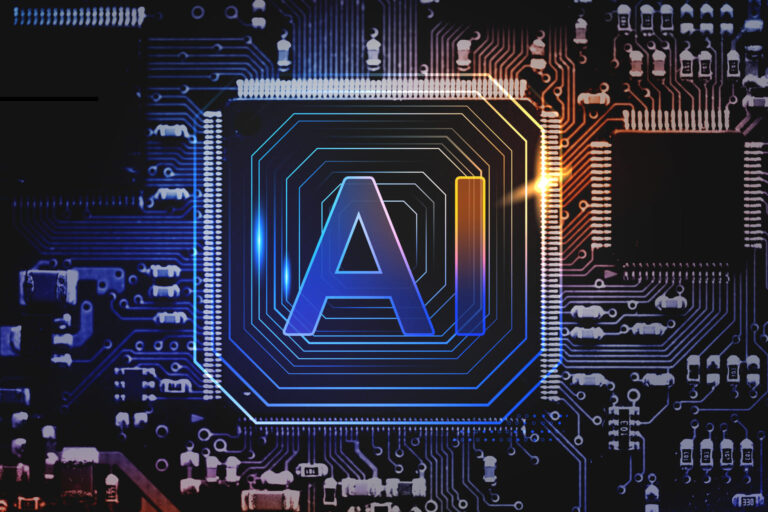The Future of Data Science
Top AI-Driven Trends Shaping 2025
The world of data science is undergoing rapid transformation, driven by groundbreaking advances in artificial intelligence (AI) and machine learning (ML). For organizations in the USA—where data underpins innovation across finance, healthcare, retail, and tech—the latest trends offer a roadmap to gaining a true competitive edge. As businesses generate more data than ever before, harnessing the opportunities presented by AI-driven tools and techniques is not just advantageous—it’s essential.
In this post, we’ll explore the cutting-edge trends that are revolutionizing data science. Backed by real-world examples, industry insights, and practical takeaways, this guide is curated for professionals, decision-makers, and enthusiasts interested in how AI is reshaping the data landscape in the United States and globally.
1. What Are Generative AI and Large Language Models?
Generative AI refers to models that can create new content—text, images, audio, or even code—based on data and prompts. LLMs, as a powerful subset, are trained on vast corpus of text and exhibit remarkable ability to understand and generate human language, synthesize information, and answer complex queries. Major advancements in neural network algorithms, self-attention mechanisms, and transformer architectures underpin these capabilities24.
Text Generation
Produce human-like language for reports, memos, marketing, and more.
Question Answering
Respond to technical, business, or scientific queries with contextual depth.
Summarization
Condense long documents or datasets into concise insights.
Translation
instantly convert language, aiding global operations.
Personalization
Adapt responses or content based on user history or organizational needs.
Key Features of LLMs
Lorem ipsum dolor sit amet, consectetur adipiscing elit. Ut elit tellus, luctus nec ullamcorper mattis, pulvinar dapibus leo.
A. Content Automation and Personalization
Automated Content Creation: LLMs generate business reports, blog posts, social media content, legal drafts, and technical documentation, reducing costs and turnaround time19.
Marketing and Sales: Custom-tailored messaging and product recommendations based on real-time customer data improve ROI.
Personalized Customer Support: 24/7 chatbots, intelligent ticketing, and email triage powered by LLMs enhance customer satisfaction and self-service, reducing workload on human agents1011.
B. Data Analysis and Synthesis
Enhanced Data Analytics: LLMs assist in extracting actionable insights from structured and unstructured data, supporting functions such as financial analysis or inventory management.
Natural Language Analytics: Make business intelligence accessible—users can “ask” for metrics or trends and receive instant summaries, data visualizations, or executive briefings.
Data Search and Discovery: LLM-powered semantic search retrieves relevant insights from vast databanks, internal wikis, or support logs.
C. Code and Workflow Automation
Code Generation and Review: Large models interpret requirements in natural language and transform them directly into working code, accelerating software development cycles and reducing errors10.
Process Automation: From supply chain optimization to HR, LLMs trigger workflows, automate tasks, and even manage administrative duties.
D. Knowledge Management and Training
Document Processing: Automatically summarize, classify, and route documents, policies, contracts, and more.
Employee Assistants: On-demand helpdesks and training modules that answer employee questions, facilitate onboarding, or upskill teams.
3. Synthetic Data Generation: Privacy, Compliance, and Model Training
A growing challenge is access to usable, privacy-compliant data for robust machine learning. Generative AI provides synthetic data—artificially created but statistically realistic—which enables:
Regulatory Compliance: Healthcare, finance, and insurance firms can use synthetic data to protect sensitive information and comply with HIPAA, GDPR, or other standards121314.
Balanced Training Datasets: Address imbalances or rare-event scenarios (e.g., fraud detection, rare disease classification) where real-world data is sparse1314.
Simulations and Testing: Model scenarios, test applications, or stress-test systems without sensitivity or privacy risks12.
Example:
Healthcare: Synthetic patient records mirroring real data enable hospitals to develop advanced prediction models, improve triage, and conduct safer research.
Banking: Financial institutions simulate customer behaviors and transaction patterns for fraud analytics or risk assessment, accelerating cloud migration while maintaining privacy.
4. Transforming U.S. Healthcare: LLMs in Action
Healthcare is one of the most impactful domains for generative AI and LLM deployment in the U.S., driving advances in quality, efficiency, and decision-making15161718.
Major Use Cases
Clinical Note Summarization: LLMs condense multi-page patient histories into precise briefings for physicians1516.
Diagnostics Support: Analyze medical images, EHRs, and physician notes, assisting clinicians in identifying diseases and predicting patient outcomes1517.
Conversational AI Diagnostics: AI-powered virtual assistants help triage, schedule appointments, and answer patient questions with empathy and accuracy17.
Drug Discovery: Accelerating molecule screening, predicting trial results, and lowering R&D barriers.
Ethics and Limitations
Bias & Fairness: Critical attention needed to avoid bias or errors in medical recommendations.
Explainability: Emerging approaches ensure that AI-produced recommendations are traceable and justifiable to healthcare teams (Explainable AI).
Compliance: Ongoing collaboration between clinicians, data scientists, and ethicists ensures responsible AI adoption1617.
The Mechanics: How LLMs Learn, Adapt, and Improve
LLMs are built on transformer architectures, enable context-rich understanding, and continually improve through:
Domain-Specific Training: Fine-tuning on specialized data sets (e.g., legal, finance, medical), boosting accuracy in industry-specific scenarios1920.
Prompt Engineering: Crafting prompts to elicit targeted outputs. Advanced workflows include role-based instructions and chain-of-thought reasoning for complex business logic212022.
Customization and Control: Enterprises can adjust system behavior with tailored prompts, supervised fine-tuning, or parameter-efficient techniques for greater control and compliance2023.
Human-in-the-Loop Feedback: Real-time user input refines answers, building trust and adaptability124.
Levels of Customization
6. Strengths, Challenges & Risks
Strengths
Efficiency: Automate repetitive tasks, boosting productivity and freeing human talent for creative work25.
Scalability: Process and analyze massive datasets across global operations25.
Cost Savings & Growth: Reduce manual hours and enable new, data-driven business models266.
Language and Multimodality: Power cross-cultural and multi-format analysis.
Challenges
Bias and Hallucination: Models might produce biased, incorrect, or nonsensical output reflecting their training data252728.
Transparency: Understanding “why” a model responded in a certain way is crucial for high-stakes domains1617.
Security & Data Privacy: Ensuring proprietary information remains safe and confidential25.
Operational Costs: Developing and running enterprise-grade LLMs requires substantial computational resources and expertise27.
Mitigation Strategies
Human Oversight: Implement human-in-the-loop reviews.
Feedback Mechanisms: Enable rapid flagging and correction of erroneous outputs.
Continuous Monitoring: Employ MLOps practices to retrain and monitor models in production1320.
Responsible AI Development: Adopt guidelines for ethical use, fairness, and accountability.
7. The U.S. Economic and Strategic Impact
Scale of Value: McKinsey estimates generative AI could add $2.6 trillion to $4.4 trillion in annual economic value globally, with the U.S. expected to lead in adoption26.
Job Transformation: While automation may displace certain roles, it also creates high-value jobs in prompt engineering, AI ethics, and data stewardship.
Investment Surge: Venture capital in U.S. generative AI startups nearly doubled year-on-year between 2023 and 2024, underscoring confidence in the sector26.
Competitive Edge: Early adopters are experiencing tangible benefits—faster time-to-market, enhanced customer experiences, and innovation leadership.
8. The Future: What Lies Ahead for Generative AI and LLMs?
Multimodal AI: Seamless integration of text, image, video, and audio for richer understanding and interaction5.
Real-time and Edge Computing: Enabling decisions and personalizations on the fly in IoT, mobility, and remote health.
Greater Personalization: Hyper-customized consumer and professional experiences in every domain.
Responsible AI at Scale: Emphasis on transparency, governance, and shared ethical standards as AI becomes mission-critical.
Conclusion: Embracing the Generative AI Revolution
Generative AI and large language models are reshaping all facets of data science and analytics. By automating mundane tasks, generating valuable insights, powering sophisticated analytics, and enabling new forms of interaction, these technologies are propelling U.S. businesses into a new age of efficiency and innovation.
Organizations that harness the power of generative AI today stand to realize outsized advantages tomorrow. Strategic investment in people, practices (like prompt engineering), and responsible AI policies will position U.S. enterprises for sustainable leadership as the generative AI era accelerates.
Whether you’re a startup, Fortune 500 company, or public sector pioneer, the time to experiment, adapt, and scale generative AI is now.
For further reading on current and emerging trends in generative AI and LLMs, consider resources from IBM, Coursera, McKinsey, and industry expert blogs for practical case studies and advanced guidance21926.


